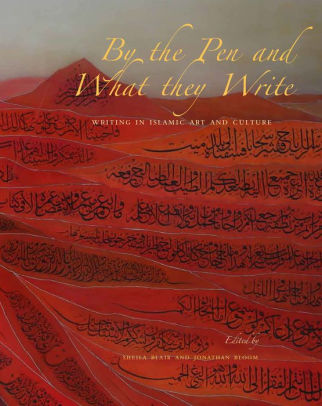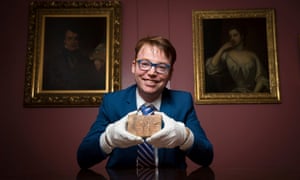Watch these thrilling underwater marble races
via Boing Boing by Andrea James

The MarbleLympics dodecathlon just concluded, but the real excitement came in the 11th round, an underwater marble race that encompassed the thrill of victory and the agony of defeat.
Continue reading
==============================
A Short Analysis of T. S. Eliot’s ‘Mr Apollinax’
via Interesting Literature
A summary of a surprisingly comic poem
‘Mr Apollinax’ is one of the twelve poems included in Prufrock and Other Observations, T. S. Eliot’s debut collection of poems from 1917. The collection is highly sought after now in a first edition, but the initial print run of 500 copies wouldn’t sell out for five years. Nevertheless, the poems contained in this volume are among the first great modernist poems written in English. ‘Mr Apollinax’ displays the arresting imagery and serio-comic vein that run through the whole of the collection, as we’ll try to demonstrate in our analysis and discussion of it.
Continue reading
==============================
The beauty and mystery of Arabic calligraphy
via 3 Quarks Daily: Robert Irwin in The Spectator
Arabic script has always had a special prestige among Muslims. But too many ravishing manuscripts have been tragically lost

Hard cover image of a book edited by Sheila S. Blair and Jonathan M. Bloom
The title is a quotation from the Qur’an and comes from the opening of the ‘Surah al-Qalam’ (Chapter of the Pen), in which the authority of the cosmic scribes in heaven, whose writing determines the fate of humanity, is invoked in order to authenticate the revelation that follows. According to Islamic tradition, the Prophet Muhammad was illiterate (and so presumably were most of his audience).
Continue reading and discover, as I did, that “Baghdad, a city with a population many times that of medieval London and Paris combined, had an unprecedentedly large literate population”. This in the eighth century when very few people in what became the UK would be able to read anything.
==============================
Everything, even a rock, has some degree of consciousness
via Boing Boing by Mark Frauenfelder

Philip Goff, associate professor in philosophy at Central European University in Budapest, argues that the idea of panpsychism ("mind is everywhere") shouldn't be dismissed just because it sounds crazy.
Continue reading
==============================
The wartime origins of plastic surgery
via The National Archives blog by Louise Bell
This blog contains images of injury some readers might find upsetting.
Before the First World War, plastic surgery was rarely practiced as a specialist area of study; in most circumstances, work was undertaken by whatever surgeon or specialist received the case.
The rise in the number of face mutilations from the Battle of the Somme onwards, as well as improvements in asepsis and general anaesthesia, encouraged the development of a separate medical speciality treating all kinds of superficial mutilation.
The person most linked to facial reconstruction in the First World War is Harold Gillies. Born in New Zealand, he studied medicine at Cambridge and qualified as a surgeon in the UK.
After heading to France to serve in the war with the Royal Army Medical Corps, Gillies met Charles Auguste Valadier, a dentist who was enthusiastic in trying to replace jaws which had been destroyed by gunshot wounds. It was then that he turned his attentions to plastic surgery of the face.
Continue reading
a) I did not think the images were that bad.
b) "Sidcup can truly be said to be the birthplace of plastic surgery" caught my attention since Sidcup is my own birthplace.
==============================
Ideas were not enough
via Arts & Letters Daily: an essay by Mark Koyama published in AEON
Locke, Spinoza and Voltaire were all brilliant, but religious freedom in Europe was driven by statecraft not philosophy
Religious freedom has become an emblematic value in the West. Embedded in constitutions and championed by politicians and thinkers across the political spectrum, it is to many an absolute value, something beyond question. Yet how it emerged, and why, remains widely misunderstood.
According to the conventional narrative, freedom of religion arose in the West in the wake of devastating wars fought over religion. It was catalysed by powerful arguments from thinkers such as John Locke, Baruch Spinoza, Pierre Bayle and Voltaire. These philosophers and political theorists responded to the brutality of the religious wars with support for radical notions of toleration and religious freedom. Their liberal ideals then became embedded in the political institutions of the West, following the American and French Revolutions.
Continue reading
==============================
Mathematical secrets of ancient tablet unlocked after nearly a century of study
via the Guardian by Maev Kennedy
Dating from 1,000 years before Pythagoras’s theorem, the Babylonian clay tablet is a trigonometric table more accurate than any today, say researchers

Mathematician Dr Daniel Mansfield with the Plimpton 322 tablet.
Photograph: UNSW/Andrew Kelly
At least 1,000 years before the Greek mathematician Pythagoras looked at a right angled triangle and worked out that the square of the longest side is always equal to the sum of the squares of the other two, an unknown Babylonian genius took a clay tablet and a reed pen and marked out not just the same theorem, but a series of trigonometry tables which scientists claim are more accurate than any available today.
The 3,700-year-old broken clay tablet survives in the collections of Columbia University, and scientists now believe they have cracked its secrets.
Continue reading
==============================
Going Nowhere: Daniel Judt on Tony Judt's love of trains
via 3 Quarks Daily: Daniel Judt in The Point
Before my dad died in August 2010, he had begun work on his next book. “The time has come”, he had decided, “to write about more than just the things one understands; it is just as important if not more so to write about the things one cares about.” The thing my dad understood was twentieth-century European history. The thing he cared about – more than almost anything or anyone – was trains. His next book would be titled Locomotion: a history of the railway.
Continue reading
==============================
The world of Jane Austen [timeline]
via OUP Blog by the Oxford Reference marketing team

Three young woman are sitting at table in a garden having afternoon tea by Kate Greenaway, from Wellcome Images. CC-BY-SA 4.0 via Wikimedia Commons.
Jane Austen was a British author whose six novels quietly revolutionized world literature. She is now considered one of the greatest writers of all time (with frequent comparisons to Shakespeare) and hailed as the first woman to earn inclusion in the established canon of English literature. Despite Austen’s current fame, her life is notable for its lack of traditional ‘major’ events. She did not marry, although she had several suitors, and any references to private intimacies or griefs were excised from Jane’s letters by her sister Cassandra after the author’s death. Austen struggled to get many of her novels published, and some of her best-loved writings (including Northanger Abbey and Persuasion) were published posthumously.
Continue reading
==============================
Watch hard candies get made on a candy press from 1871
via Boing Boing by Andrea James
Producing hard candy in bulk still required a lot of skill in Victorian times, as Lofty Pursuits demonstrated by making cinnamon hearts on this hard candy press from 1871.

Continue reading (yes, there is a video)
No comments:
Post a Comment